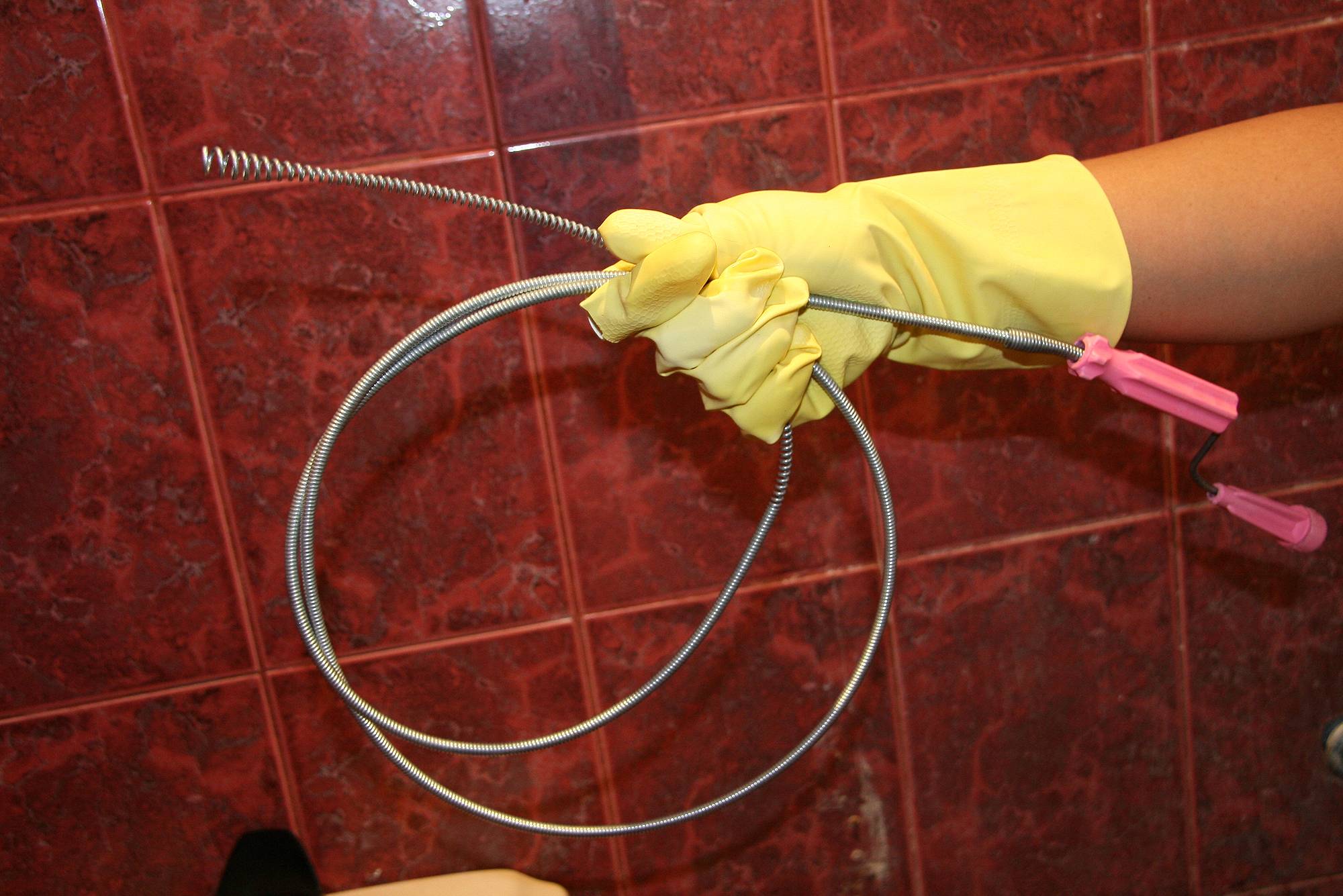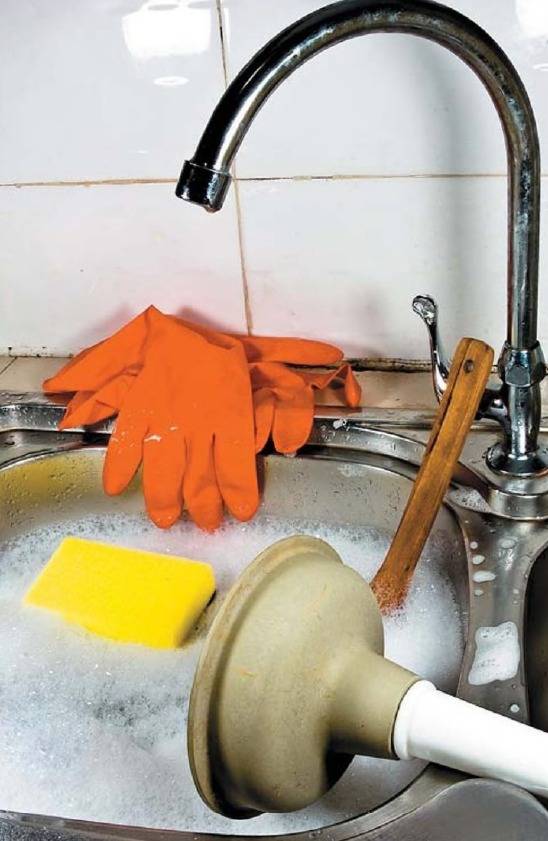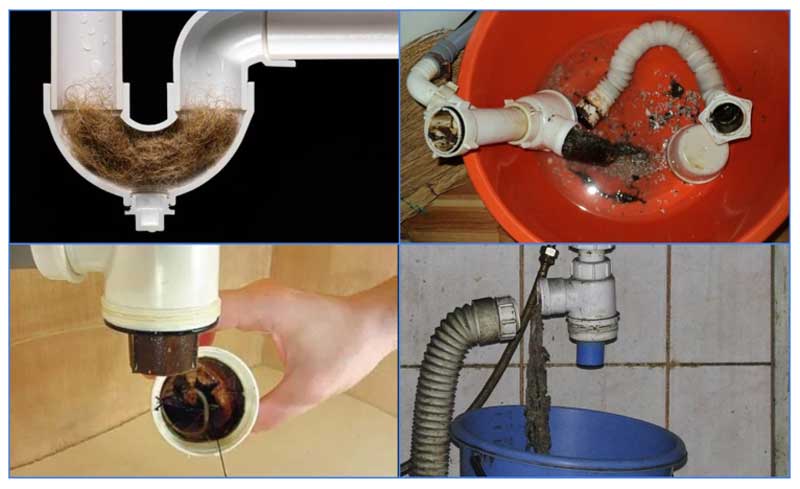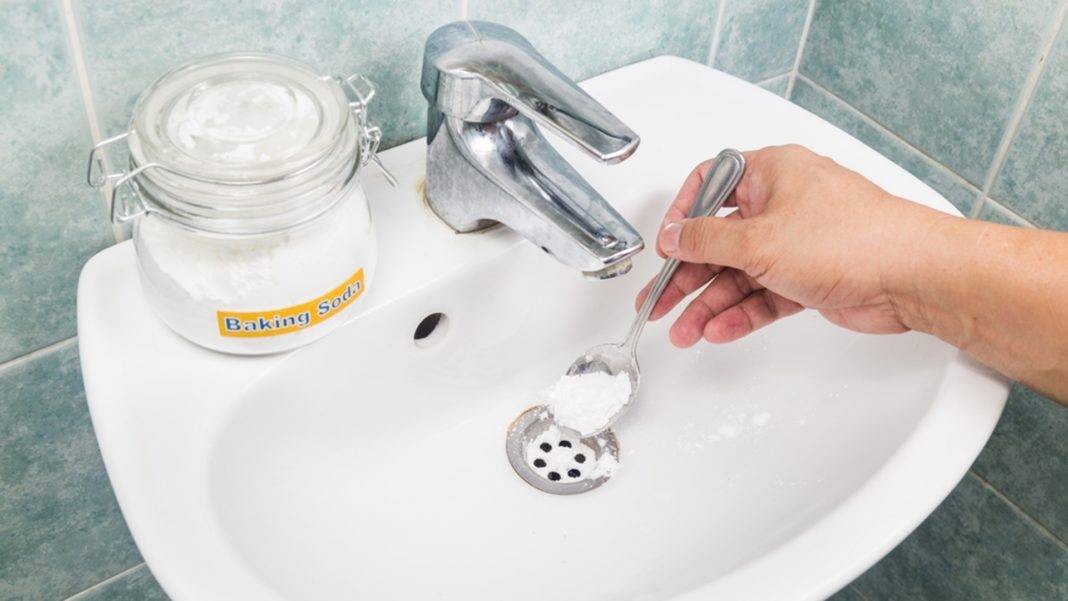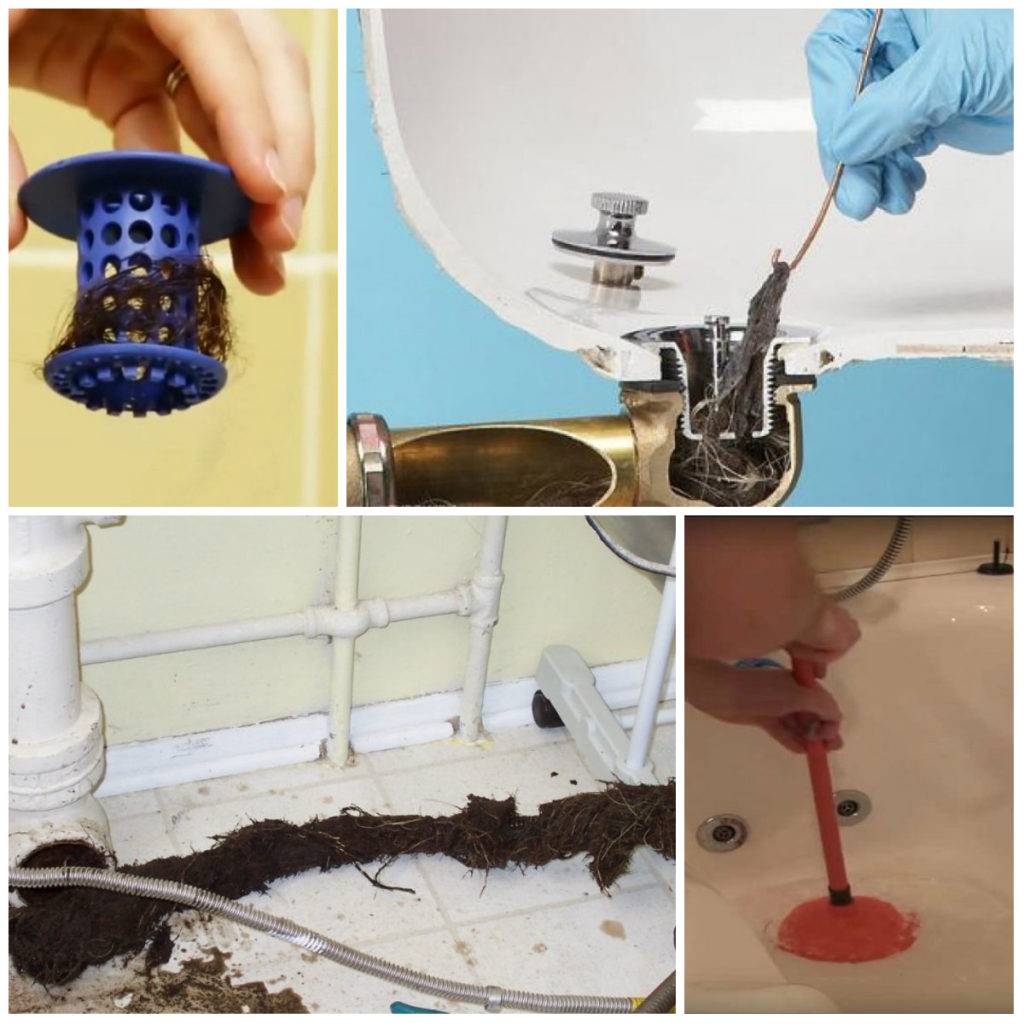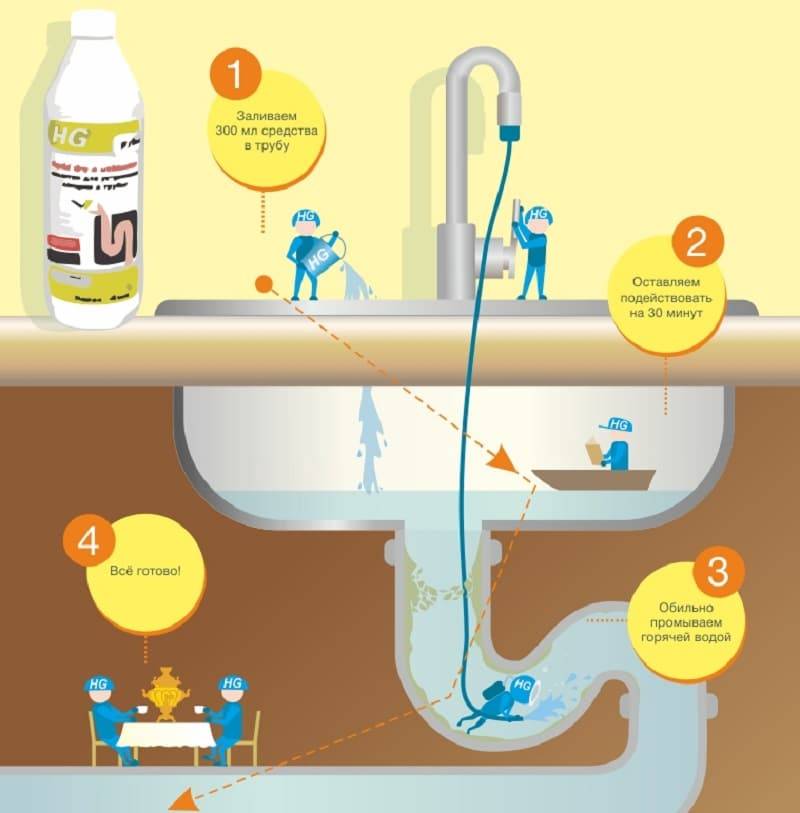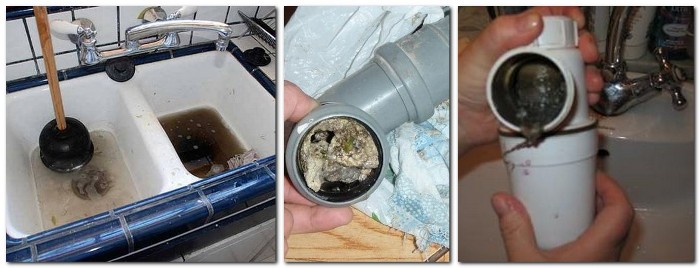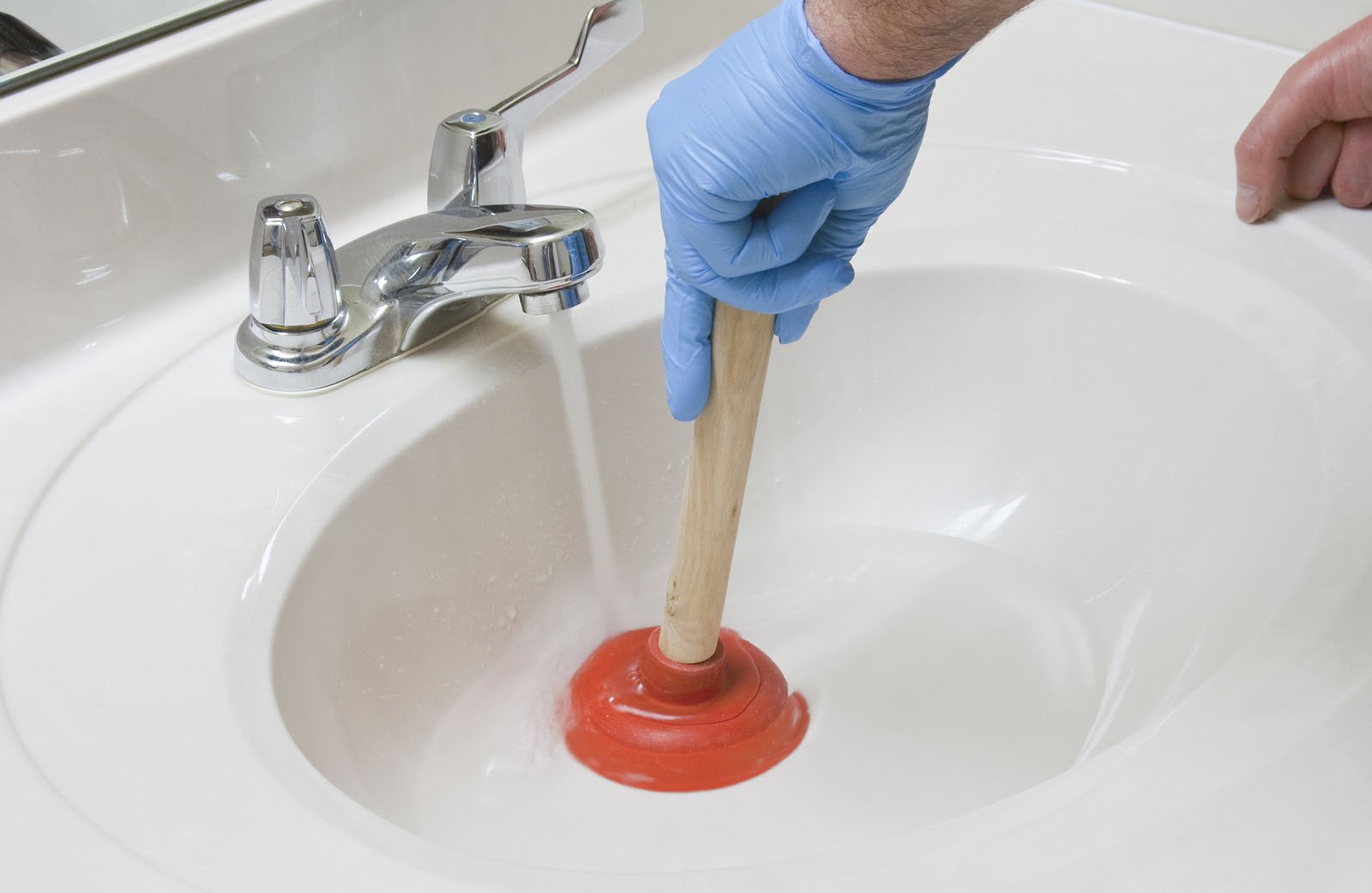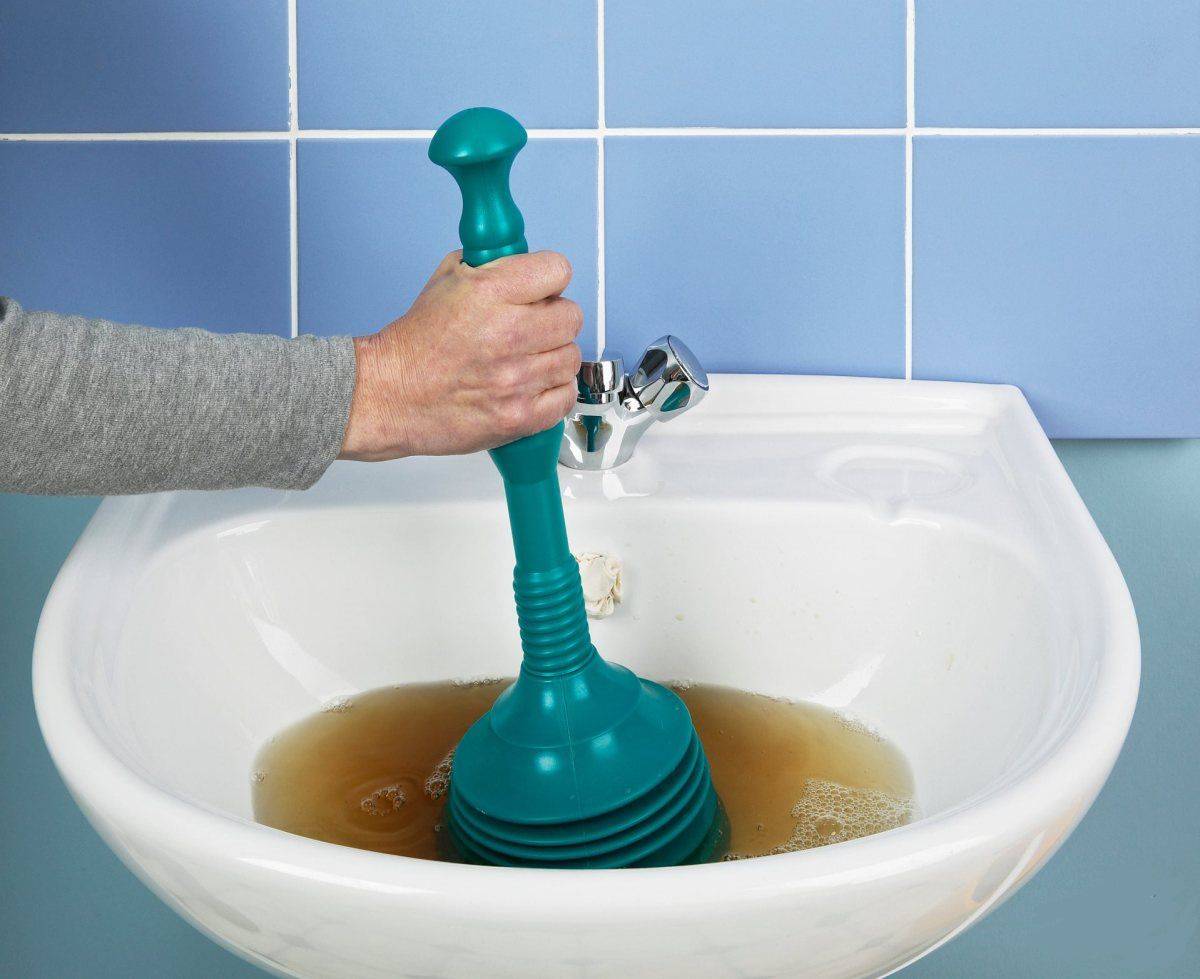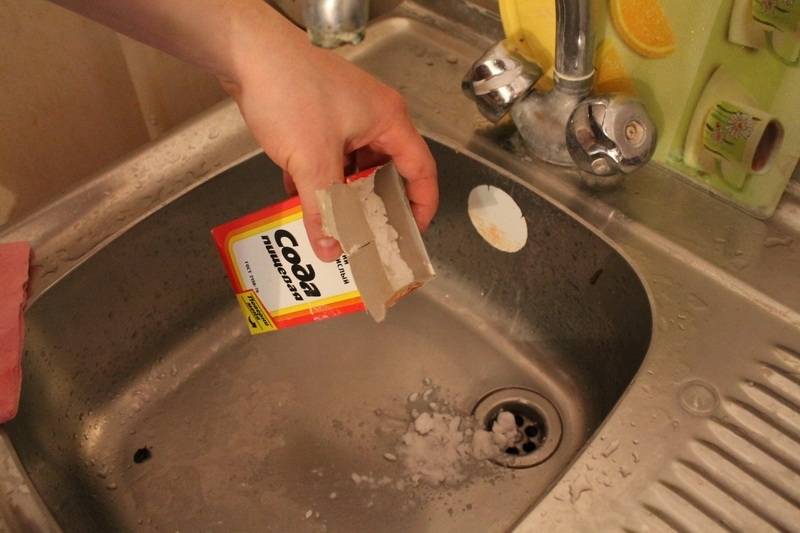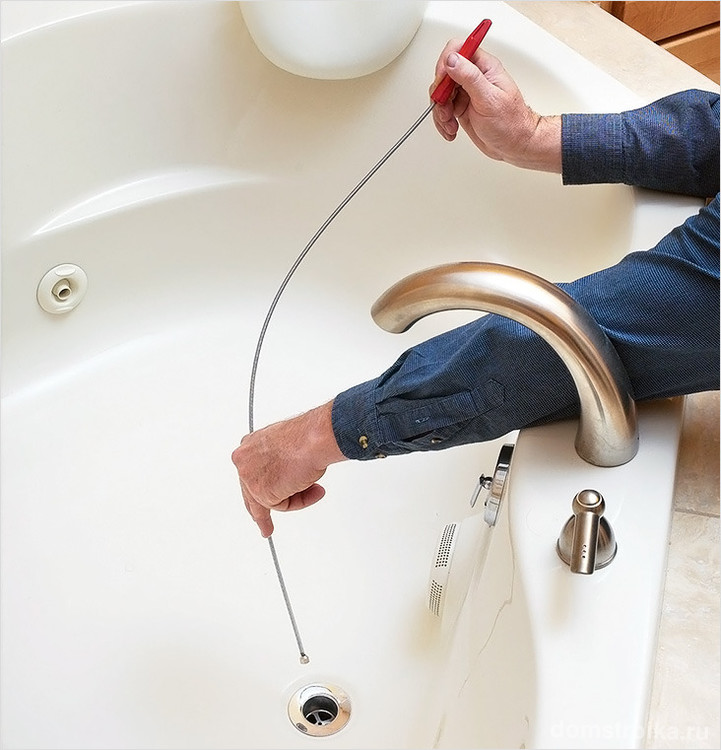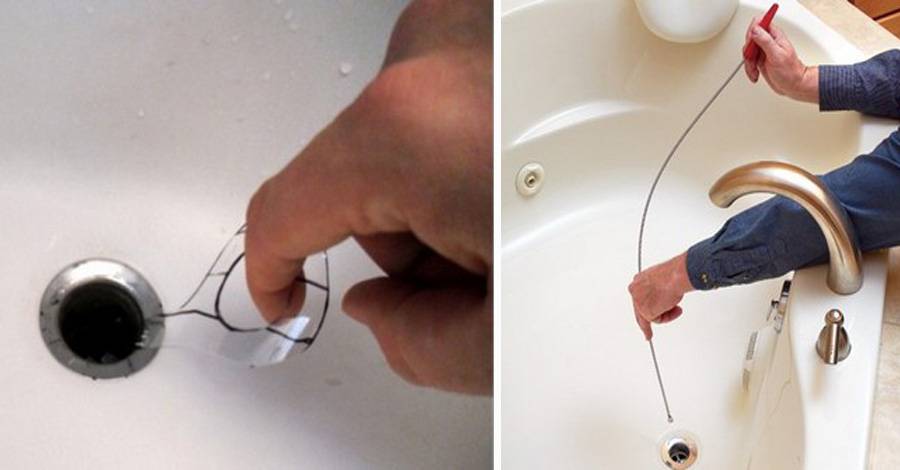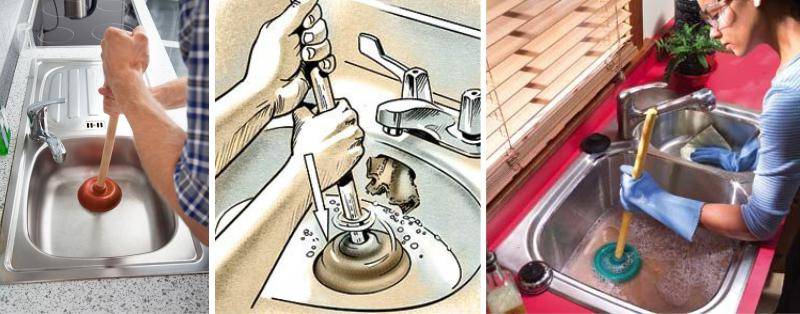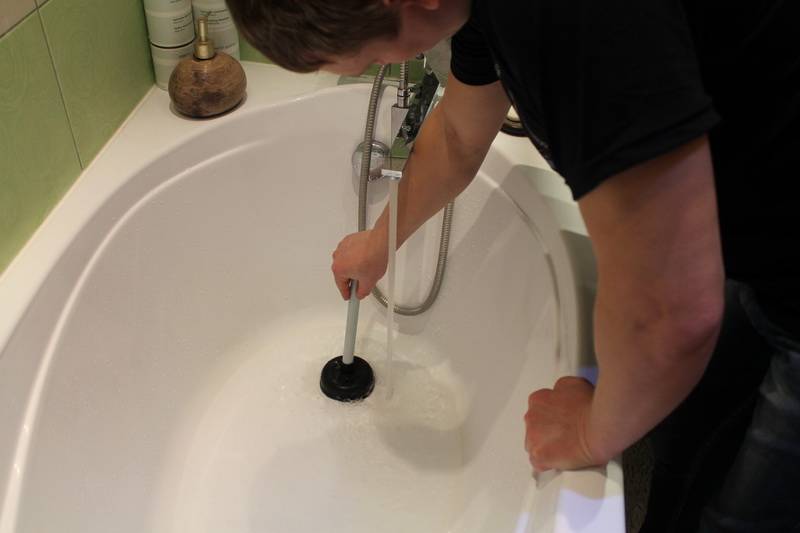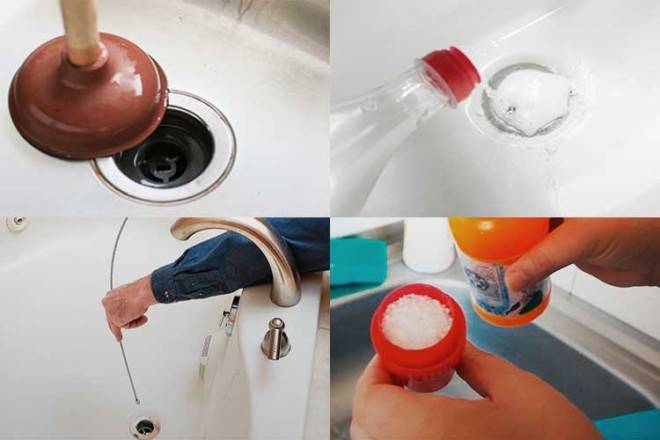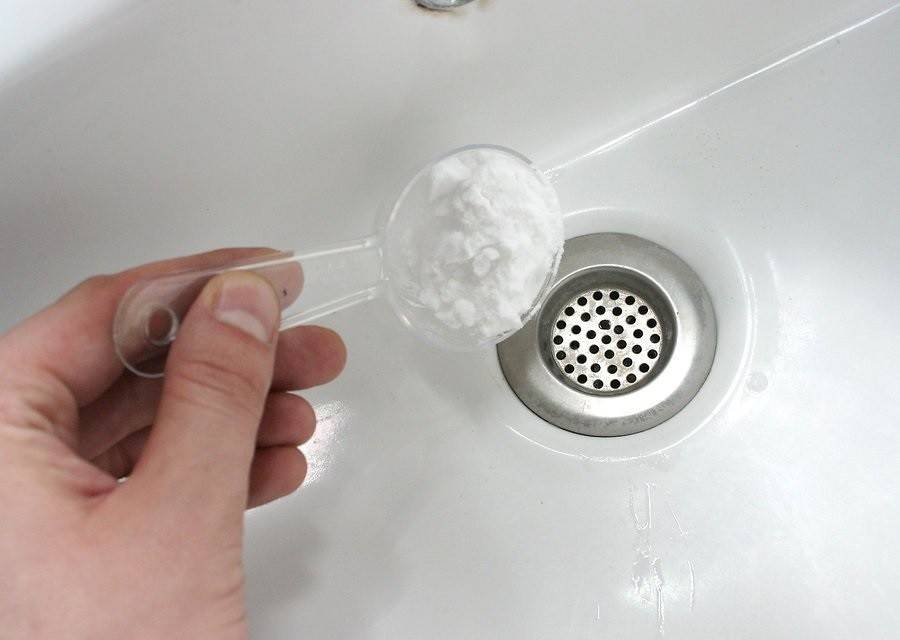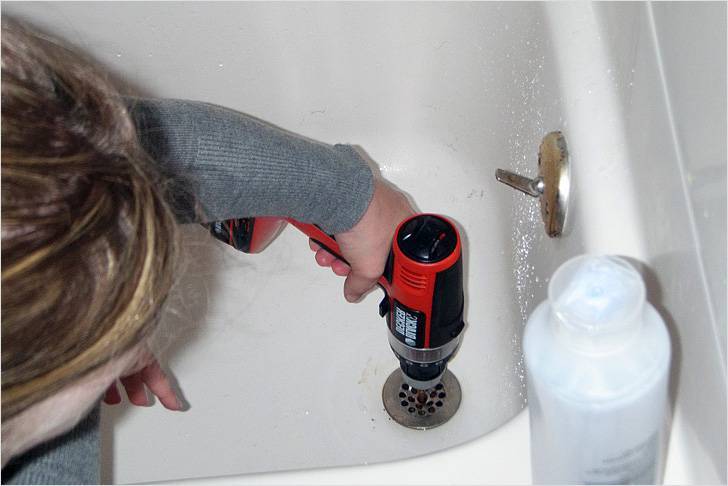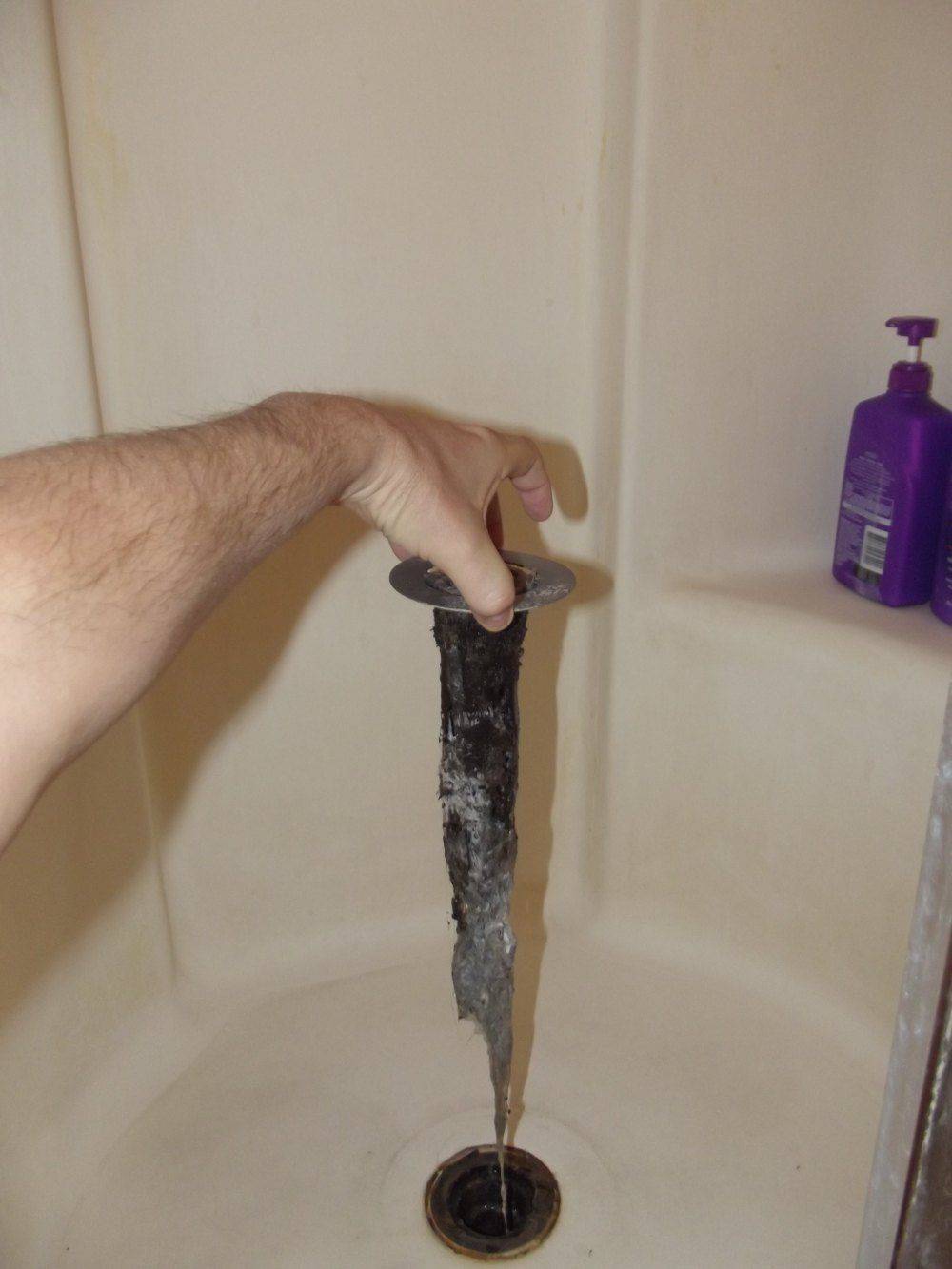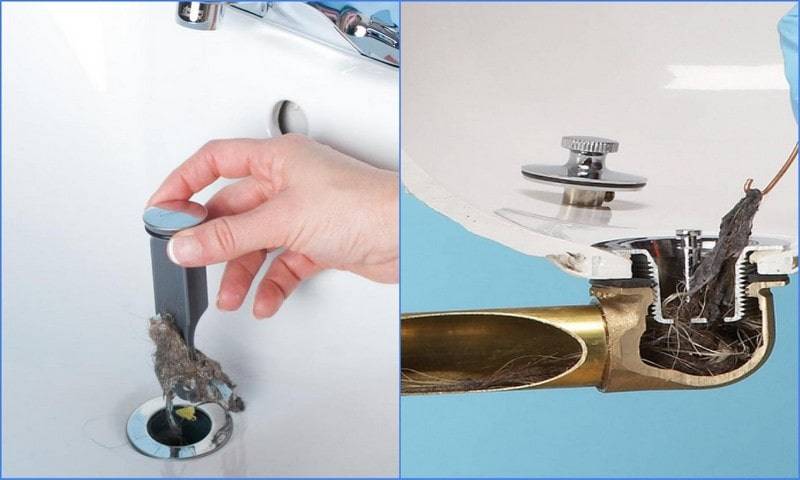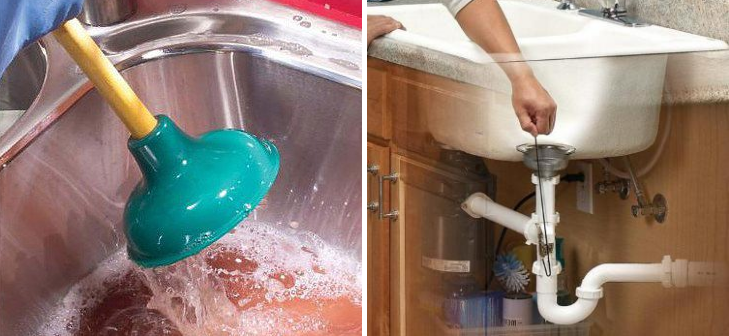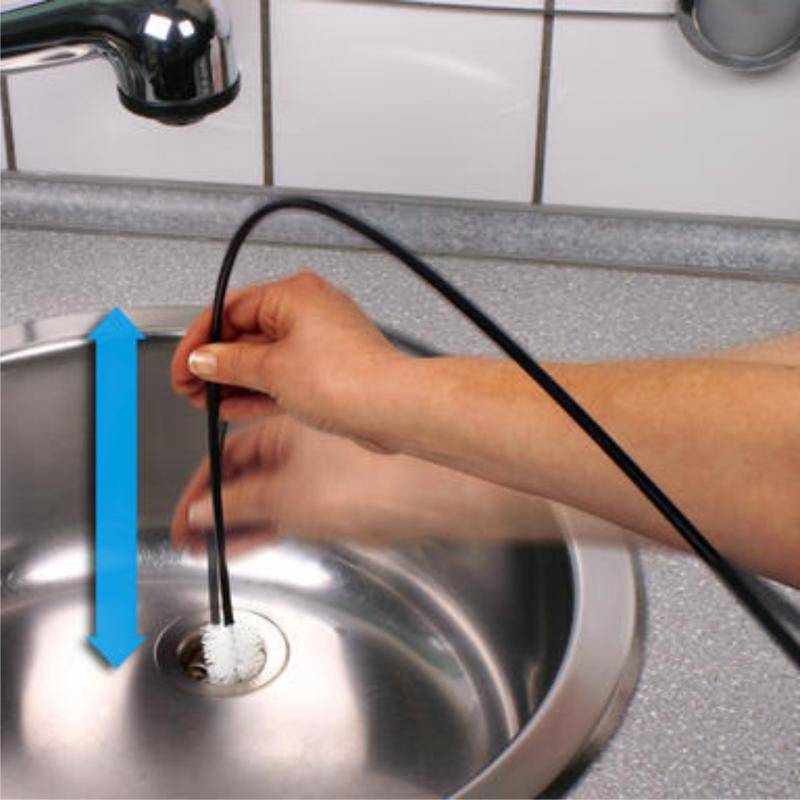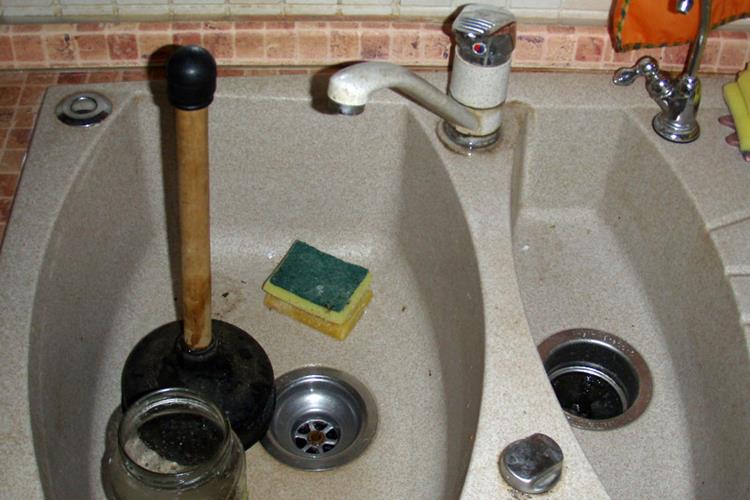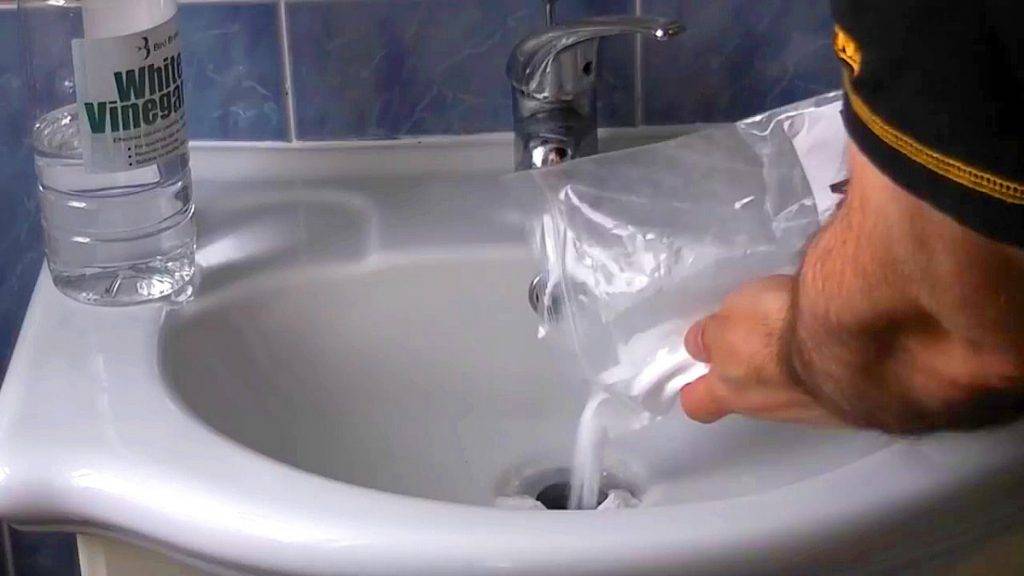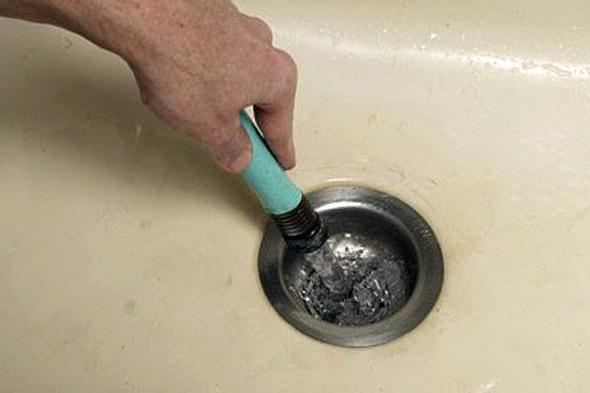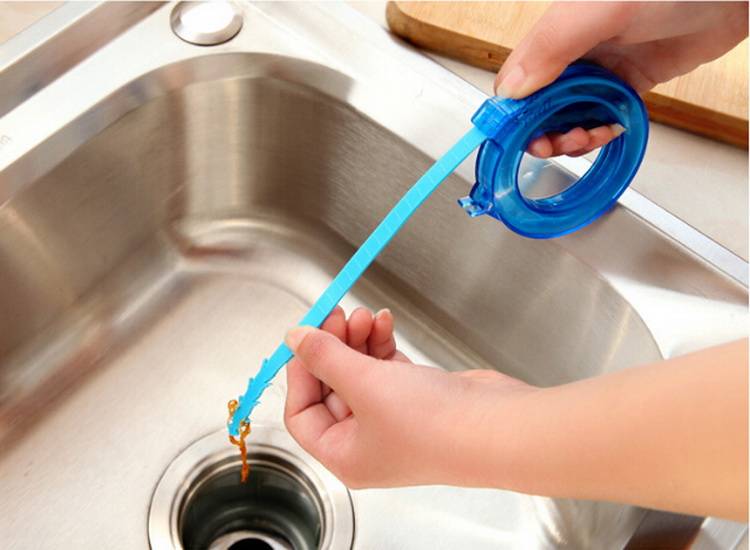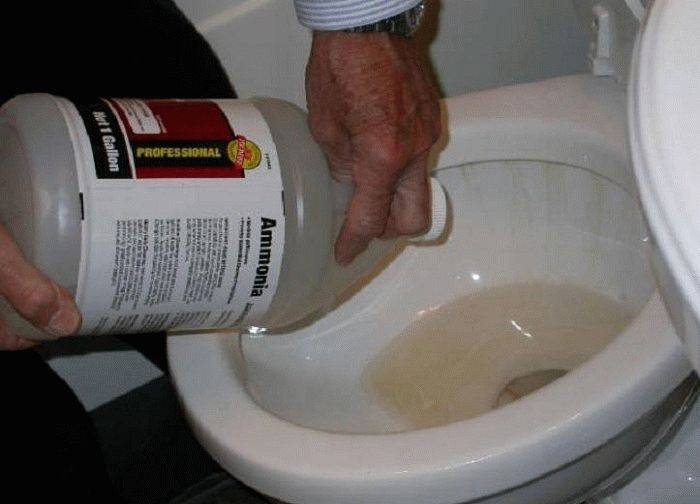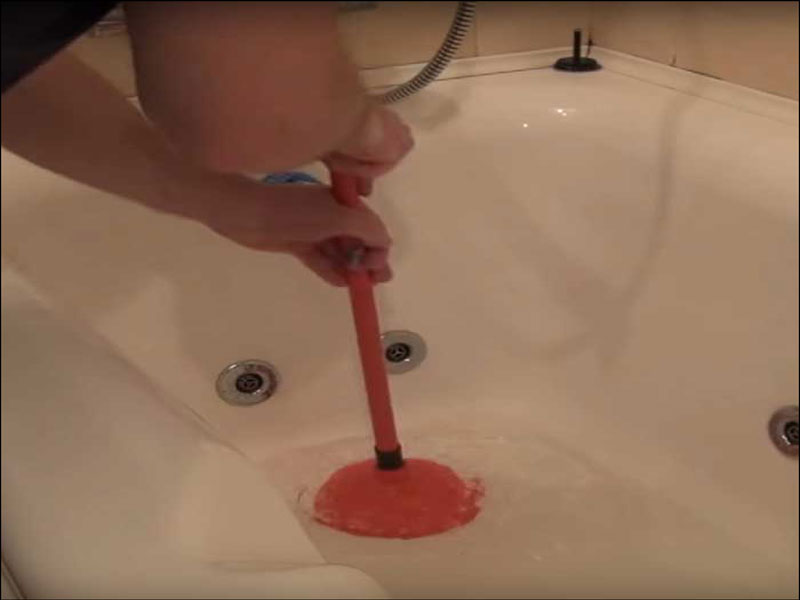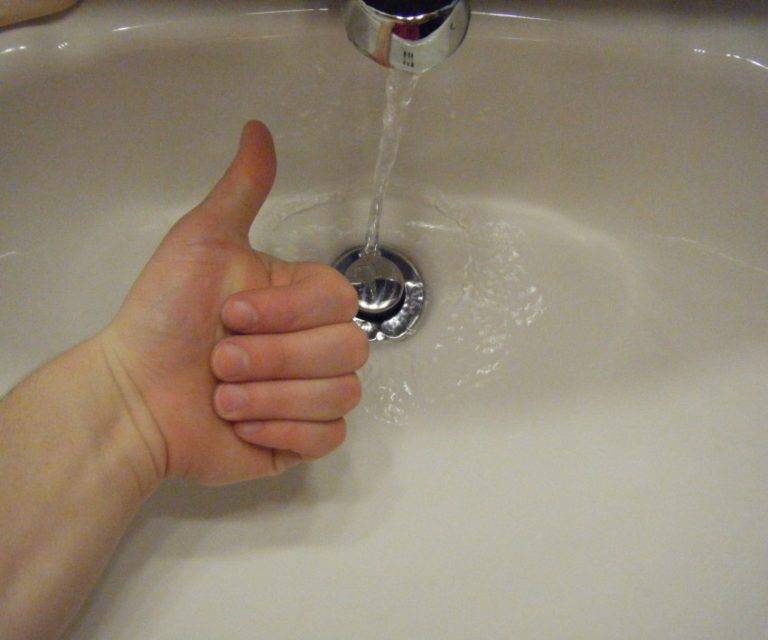How to clean an old tap (mixer)
The reason for a sharp decrease in the water pressure can be a plug, consisting of particles of rust and scale, or a clogged aerator.
Before clearing such a blockage, remember the safety measures:
Be sure to turn off the water using the valves located at the inlet of pipes to the house or apartment.
Open the taps, checking for water inflow.
When tightening the valve elements, do not use too much force so as not to break the thread.
To avoid scalding, be careful when working with the hot water tap.
Cleaning the aerator
- Dismantle it using an adjustable wrench.
- Rinse the nozzles with a high pressure of water or clean the mesh with a needle.
- Reinstall the aerator.
High-quality cleaning of the aerator will significantly improve the water pressure in the tap
Cleaning the single-lever mixer
If you want to increase the water pressure in a tap equipped with a single-lever mixer, do the following:
- Remove the handle of the device, secured with a screw (it is hidden under a plastic cap, red and blue) on the front side.
- Pull out the plug carefully.
- Unscrew the screw and remove the handle.
- Dismantle the housing cover of the device, under which the mechanism is hidden.
- Unscrew the clamping nut using an open-end wrench.
Determine what type of mechanism is used in the crane.
If the valve is equipped with a disc cartridge, pull the stem with a light and careful movement and remove the cylindrical mechanism. Such a cartridge cannot be repaired and requires a complete replacement.
Elements of a mixer equipped with a disc cartridge
When disassembling the ball mechanism, it is important not to lose small parts and springs. The body of the device itself should be thoroughly rinsed
If you find serious damage to the parts and when the ball loosely dangles in the socket, it is better to replace the mechanism. After cleaning, reassemble the mixer in the reverse order, carefully tightening the fixing screw.
Disassembling a ball valve requires accuracy and care
How to clear a blockage in a tub siphon
In some cases, cleaning the siphon is required to clear a blockage in the bathroom. This is done like this:
- Cover the floor with a soft cloth and put an empty basin.
- Remove the bolt nut, followed by the flask, after which the water with the elements of debris will begin to drain.
- The emptied siphon is washed by hand, thoroughly cleaning the walls from plaque.
After assembling the structure, it should be installed back in such a way that the drain pipe does not literally lie on the flask. If you ignore this, the water seal will break. To check the degree of tightness of the joints, as well as connections, open the tap and fill the water seal with water.
Anti-clogging magneto-mechanical brush HELPPIK (HELPPIK)
It has been on sale since 2010 and has a reputation for being an effective and easy way to remove trash from a siphon. This is a plastic stick with notches and built-in magnets. Its length is 38 cm, and its diameter is about 5 mm. Ruff is inserted into the hole of the siphon grate and scrolled. In 10 seconds, he will collect the blockage. The stick is easy to remove and does not slip. The presence of magnetic elements makes it possible to reach small metal objects. The ease of use of the device and its functionality are confirmed by domestic housewives.
Tools to help unclog the drain
If household chemicals and improvised tools did not help to fix the problem, you need to connect special devices.
Cleaning with a plunger
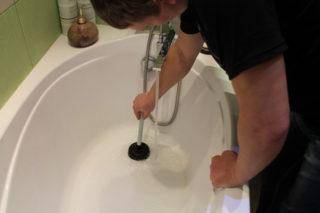 The plunger will quickly remove weak blockages
The plunger will quickly remove weak blockages
The plunger is a tool designed for cleaning plumbing fixtures. It will handle any slight contamination.Cleansing is carried out as follows:
- Fill the bathroom with a little water to cover the hole.
- Place the plunger over the drain passage and press. In this case, the rubber cone of the tool will begin to suck air from the pipe.
- Move the device up and down several times so that the debris inside the pipe begins to move.
- Release abruptly to allow water to flow into the drain at a certain pressure.
Vacuum cleaner
You can clean the drain from the blockage with a vacuum cleaner, which has the function of blowing out air. It serves as a replacement for the plunger. To work, it is necessary to wrap the end of the pipe with a rag and press it firmly against the drain hole. Turn on and air through the debris or destroy it. Then rinse with hot water.
Cleaning with a rope
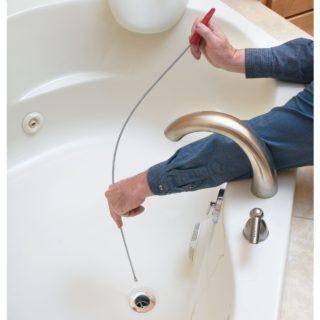 The rope will help from strong blockages
The rope will help from strong blockages
A plumbing cable will help to eliminate serious pollution. It has a handle at one end, and a spring-like tip at the other. Insert the tool into the hole and push the debris towards the main pipe. After removing the blockage, the drain must be rinsed with hot water.
You can clean the water passage in the bathroom with a cable hook. They don't need to push through the garbage, but get it out. This method works well if the blockage has formed near the surface of the drain hole. To remove it you need:
- Gently scrolling, insert the cable into the pipe.
- Push it inside until resistance is felt.
- Twist and hook on the debris, then remove it.
After completing the cleaning process, flush the drain with hot water.
Simple ways to clear blockages
If you are faced with a blockage problem, there are several options for getting rid of it at home. Before you start cleaning, you will need to remove the visible causes of the blockage (residues from dishwashing, hair and other debris). Then you will need the most easy-to-use and inexpensive remedy for blockages - a plunger. Such a device has been helping the owners for a long time both to clear the blockage in the bathroom and to remove it in any other bathroom.
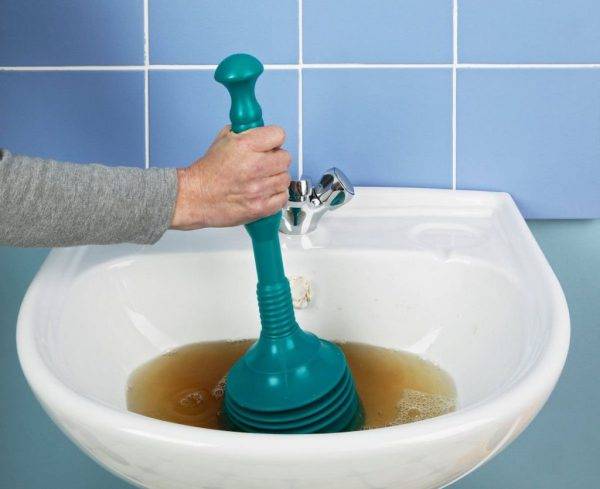 Clearing a blockage with a plunger
Clearing a blockage with a plunger
- Regardless of whether the sink or the bathtub is clogged, you need to fill everything with water and plug the overflow hole with a rag. This is necessary so that when using a plunger, when the sewer pipes are clogged, the pressure created by the water does not decrease.
- You need to install the plunger over the hole for the stack, pressing on the handle to create pressure in the pipes. Water should be pumped several times, after which the plunger should be abruptly removed. The blockage should move to either side of the pipe.
- If this does not happen, you need to boil the kettle and pour hot water directly into the drain. Then repeat the procedure several times with a plunger.
If it does not help, the second method will definitely break through the blockage in the bathroom, since the blockage will be broken down by boiling water.
 Plumbing cable
Plumbing cable
- First you need to place the container under the siphon.
- Then remove it in order to see if it is clogged with debris, if necessary, clean it.
- Next, insert the siphon back into the sink and turn on the water.
- If it also continues to accumulate, it means that the weir is completely clogged and the pipes need to be cleaned.
- It is necessary to remove the siphon again and place the plumbing cable in the pipe.
- At the first resistance, turn it clockwise. Most likely, this will be overcoming the first bend. And the very next cleaning jerk will remove the plug. We push the cable and pull it out, collecting debris on it.
- If the device does not work, you do not need to push it there by force. It can break and stay there, and the pipes in the bathroom become unusable.
You can make an analogue of a plumbing cable yourself, there is a good and simple way. To do this, wrap the bottle (2 l) with paper (the thickness should be 2 cm). When it forms a spiral on the bottle, you need to circle it with a marker.
Next, you need to cut out the outlined drawing, starting to cut from the top. We make a handle from the bottom of the bottle.Then along the entire spiral on both sides we make notches, the so-called teeth. A homemade plumbing cable has formed, with which you can try to clean the pipe.
How to clean the siphon
To clean the siphon, the device is dismantled. Basic rules of work:
- prepare a basin and a large rag to collect water;
- remove the fasteners and release the flask, drain the liquid;
- soak in a solution of a chemical agent and rinse well under running water;
- for tubular and bottle structures, dismantle the branch pipe and clean it from dirt;
- collect the siphon so that the branch pipe does not press on the flask;
- check the tightness of the assembly with a strong pressure of water by opening the tap.
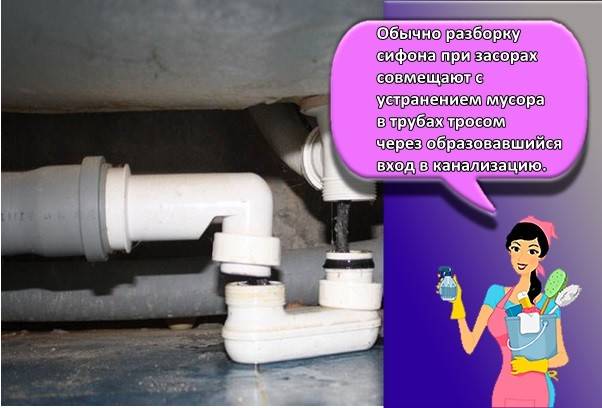
Usually, the disassembly of the siphon in case of blockages is combined with the elimination of debris in the pipes with a cable through the formed entrance to the sewer.
Reasons for the formation of blockages
Over time, each owner is faced with the need to clean the pipes in the bathroom due to the formation of a mud plug, consisting of hair, wool, fragments of rags and other components. Another explanation for the fact that water has ceased to go into the drain hole is the accumulated fatty deposits, to which household dirt sticks especially actively.
When the drain is clogged in the bathroom - what to do must be decided immediately. The procedure depends on the nature and degree of the blockage. When this happens in an apartment building, you should first find out if it is a local traffic jam or a common building block.
In the first case, the blockage is collected in the sewer network of the apartment and you can deal with it on your own, and in the second - in the riser and the intervention of specialists will be required to eliminate it.
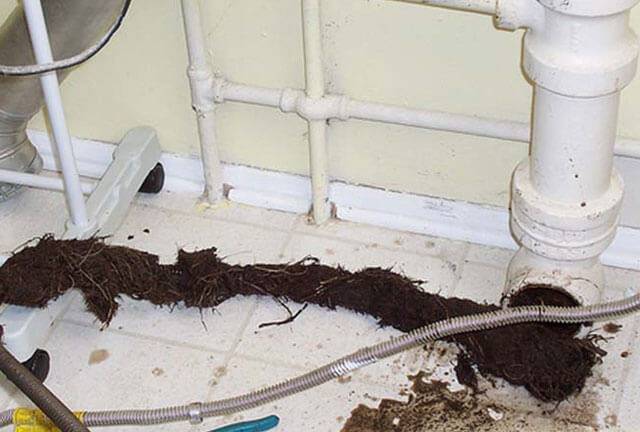
Determining the place where the cork has gathered, as a result of which you have to decide how to clear the blockage in the bathroom, is quite simple. To do this, you need to open the taps in the bathroom and in the kitchen and watch how the liquid is sent to the sewer system.
If the water at one of these points does not go away, then the blockage is local, and when in both, it means that the riser is clogged and it is better to call the plumber, but you can handle the apartment one yourself. The main thing is to follow certain rules on how to eliminate a blockage in the bathroom, and take into account the advice of people who have already encountered a similar problem.
There are several methods for cleaning a bathroom pipe:
- thermal - for its implementation you will need hot water or boiling water;
- chemical - performed with the use of special preparations capable of corroding corks;
- mechanical - it is necessary to use the plumbing cable and open the siphon cup;
- due to pressure - using a plunger.
The thermal method should not be used if the pipes are not able to withstand high temperatures.
Soda for small blockages
Soda in combination with baking soda will help to cope with a small blockage in the bath without a plunger. For this:
- pour 125 mg of each product into the drain hole;
- pour soda and salt with 3 cups of boiling water;
- do not use the bathroom for 7 hours;
- after this time, the drain should be rinsed with hot water.
One of the most popular ways to remove debris from the drain with handy tools is to use baking soda and vinegar. These components react with each other and effectively remove the blockage. For such a procedure, you will need acetic acid 70% (200 ml) and 3 tbsp. l. soda.

Be careful when handling vinegar as it is very easy to get a chemical burn. Soda is poured into the drain and poured with acetic acid
Then you should wait 40-50 minutes and gently clean the drain with boiling water until the foam from the soda and vinegar disappears completely. It should be remembered that this method will only help to destroy organic waste. If the bathtub is clogged and needs to be cleaned of inorganic contaminants, then it is best to use a cable, plunger or store-bought preparations.
How to clean a siphon
A lot of dirt, which prevents the free outflow of water, accumulates in the siphon, as well as in the area where the outlet pipe is connected to the common sewer riser. This can cause an unpleasant odor in the bathroom.
To clean this device, carefully disassemble it using the following procedure.
- Take a rag that will absorb the liquid. Spread it under the siphon, as water will spill onto the floor during dismantling.
- Place a basin under the siphon.
- Slowly loosen the device lock nut.
- Dismantle the siphon flask.
- Rinse the device with clean water to remove plaque and debris accumulated on the walls.
- Install the siphon in its original place so that the drain pipe does not rest on its flask. Otherwise, the water seal may be broken, and an unpleasant smell of sewage will appear in the bathroom.
- Turn on the water to fill the water seal. Check how tight the connections are.
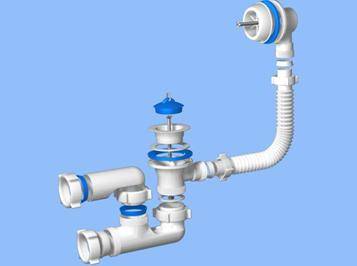
Disassembling and assembling the siphon is easy
It is recommended to clean the siphon every 2-3 months. This will reduce the risk of mechanical blockage.
The main "culprits" of blockages
First you need to figure out for what reasons there is a blockage in the pipe in the bathroom? Most often, this problem arises as a result of human activity. The bottom line is that a person cannot keep track of what goes into the drain, because we are talking about long hair, animal hair, particles of rags. All this garbage is compactly packed in the sewer and forms a lump that blocks the passage of water.
It is then that stagnation of water arises, with which you need to start the fight in time, without postponing this process until later.
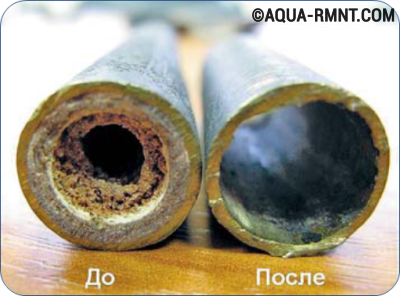
It is better to prevent a blockage of a pipe than to look for a way out of the situation.
By the way, in a multi-storey building, the blockage can be local, that is, in one apartment, or general, if the central sewerage system of the building is clogged. To determine the type of blockage, you should turn on the water in the kitchen and bathroom: if the problem is only in one place, the blockage is local and you can remove it on your own.
Speaking about the causes of blockage, one cannot fail to mention such factors: fatty deposits in pipes, deterioration of the sewer system. In short, there are several reasons, so the question of how to clear the blockage in the bathroom is extremely relevant.
Folk remedies for cleaning
Time-tested folk remedies used to remove plugs from the bath drain system do not allow you to deal with the most difficult blockages, but they do an excellent job with minor problems.
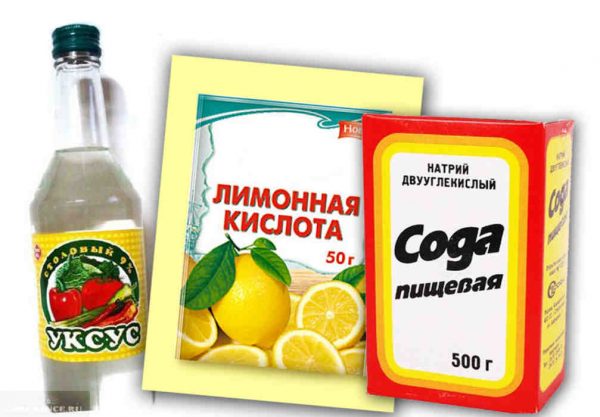 These are the tools at hand that are effective for small congestions.
These are the tools at hand that are effective for small congestions.
Commonly available improvised means, when used correctly, do not have a negative effect on the state of enamel or plastic elements of pipes, therefore, they are more gentle and can be used as often as possible.
Boiling water
Boiling water easily removes a significant amount of fat accumulated on the walls of the drain, therefore, when just such a cause of the plug is found, boiling water is simply poured into the drain hole of the bath.
Using soda, vinegar
A glass of soda is poured into the drain, after which it is spilled with a glass of vinegar, and the hole itself is closed with a stopper. The foam formed during the reaction is easily washed off after a quarter of an hour with a stream of running water.
Citric acid
Light dirt in the pipes will allow you to remove freshly squeezed lemon juice or a solution based on citric acid, which is poured into the drain hole for a couple of hours, and then washed off with a stream of hot water.
Chemistry will cope with any blockage
What to do if the pipe, which is clogged, cannot be cleaned either by the plunger or the cable, and even cleaning the siphon does not give the expected results? In this case, you have to resort to chemicals. With the help of chemistry, you can clear any blockage without applying the slightest effort.
Chemical preparations for clearing blockages require careful adherence to the instructions for use.
When choosing a pipe cleaner, all the active ingredients of the selected drug should be taken into account. Some of them are so aggressive that they can only be used in cast iron pipes. And some can be used exclusively for plastic piping.
Very important!!! Working with any chemical product requires the utmost care and protective equipment. Observe safety precautions when working with chemistry. Avoid contact with skin or mucous membranes
You should also be wary of getting such funds on chrome-plated surfaces, otherwise it can not only clean the pipe, but also clean the mixer from the chrome-plated coating
Avoid contact with skin or mucous membranes. You should also be wary of getting such funds on chrome-plated surfaces, otherwise it can not only clean the pipe, but also clean the mixer from the chrome-plated coating
Observe safety precautions when working with chemistry. Avoid contact with skin or mucous membranes. You should also be wary of getting such funds on chrome-plated surfaces, otherwise it can not only clean the pipe, but also clean the mixer from the chrome-plated coating.
Chemicals can easily deal with almost any blockage in pipes
Folk remedies for cleaning the drain in the bathroom
 Effective folk remedies for blockages in the bath
Effective folk remedies for blockages in the bath
If the blockage is not strong, you can remove it with hot water or boiling water. This method works well for removing grease and salt deposits.
To clean metal pipes, you need to pour 1.5 liters of boiling water into the hole. The dirt may not be removed immediately. In this case, you will have to wait about an hour and repeat the procedure. Plastic drain pipes are cleaned with water heated to 60-80 ° C.
You can clean the blockage in the bathroom at home with the help of available tools.
Salt and soda
Pour half a glass of each product into the drain hole and pour 0.5-1 liters of boiling water. Wait 1-2 hours and rinse with hot water.
You can clean it with baking soda alone. It is necessary to pour a liter of boiling water into the hole and clean it with a plunger. Remove dirt and fill in a glass of food grade. Add more boiling water. Repeat the process if necessary.
Soda and acetic acid
Pour a glass of soda into the drain hole and add the same amount of 9% vinegar. The ingredients will react to break down the dirt. After an hour, rinse the pipes with hot water. Citric acid can be used in place of vinegar. Add 2-3 tbsp to a glass of soda. l. powder and dissolve in water.
Lemon
You can remove light dirt with citrus juice. To do this, squeeze one fruit into the drain and wait 1-2 hours. Then rinse with hot water.
Folk remedies
If it is necessary to clean the drain, it is recommended to use improvised folk remedies in the early stages of the problem.
Here are popular homemade recipes:
- Boiling water. If an unpleasant odor is felt from the pipes, then the hole itself must be cleaned. Instead of boiling water, more hot water is poured. In the early stages of such a problem, it will be enough to simply pour boiling water into it. Of course, this will not remove the garbage, but it will be possible to wash off the adhering fat with boiling water. The main thing is to use a large amount of hot water - pour it for at least 20 minutes. Even if the plug itself has compacted enough earlier, it will gradually pass into the sewer pipes.
- Salt and soda. Soda can also be used to combat blockages. If the cork is due to fat, you can melt it with salt and baking soda. You need to take a glass of baking soda and half of this volume of salt. Stir well and cover with a cup of water. Then pour the resulting solution into the hole. Then wait 15 minutes. At the end, it remains to use a plunger and rinse everything with warm water.
- Soda. Using various improvised means, you can periodically clean the pipe holes so that blockages do not form. This kind of prevention is very helpful. It is recommended to conduct it at least once a month.To process pipes, you need to dissolve 100 g of soda in 300 ml of warm water. Then pour into the hole and wait an hour.
- Bite. This substance is also used for pipe treatment and cleaning. You can use regular table vinegar. For processing, 80 ml of a substance with a concentration of 9% is required. Pour everything into the hole, and then close it tightly with a lid. Wait a while - usually 40 minutes is enough. During this period, the vinegar will have time to eat away all organic deposits. Then it remains only to pour out two buckets of water for rinsing. Sometimes a plunger is additionally used.
- Vinegar and soda. Both of these components are used separately, but together they have an even stronger effect. It is necessary to pour 150 g of soda into the hole. Then pour 150 ml of vinegar on top. Now you need to close everything tightly so that the foam does not go up. It is this mass that will eat away at the blockages. This way you can even get rid of the hair in the pipe. The remedy is considered to be very effective.
- Alka-Seltzer. If you don't have baking soda on hand, but you have one in your medicine cabinet, this is a great substitute. It is necessary to pour two tablets into the pipe, and then pour another glass of vinegar into it. The rest of the steps are the same as in the previous recipe. At the end, it remains only to turn on hot water and rinse everything. With such folk remedies, you can get rid of not only the unpleasant smell from the pipe, but also unclog the blockages.
- Washing powder. You can use it too. It is recommended to mix it with baking soda and vinegar. First, it is supposed to pour 5 tablespoons of soda into the hole. Then the same amount of washing powder. After that, pour a glass of vinegar. Now you just have to wait and then rinse everything.
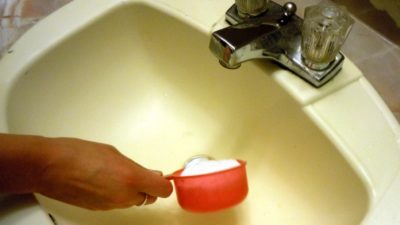
All of these home remedies are simple but powerful. They have been proven for decades.
Problem prevention
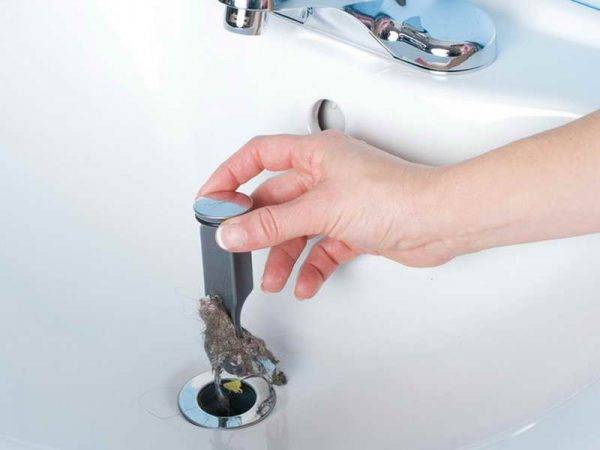 Hot water will help get rid of fatty deposits
Hot water will help get rid of fatty deposits
One way or another, you can always deal with the blockage, but every time it is unnecessary trouble and waste
To make your life easier, you should pay attention to prevention. For this you need:
- Equip the bath drain with a device for collecting hair, threads and other mechanical debris. Items can be purchased at the store. They are different versions of plastic catchers.
- Periodically pour a small amount of any commercially available pipe cleaner or liquid into the drain.
- At the slightest suspicion of a blockage (for example, when water does not leave the bath as quickly as it should), use a plunger.
Compliance with simple rules will help get rid of the problem of blockages, as well as ensure maximum permeability of the sewage system.
The above cleaning methods are not difficult for an adult, even if he is not a professional plumber.
It is important to remember that the normal operation of the drain pipe depends entirely on the prevention of plaque and dirt, as well as on the elimination of blockages at an early stage of their formation.
Other effective ways
If the tub is not too clogged, you can use lemon. To do this, squeeze the juice from three medium citrus fruits into the drain and wait 40-60 minutes. To make more juice, you can pre-hold the lemons in boiling water. After that, you need to spill the drain with very hot water. Thanks to this method, not only the debris in the bathtub is eliminated, but also the unpleasant odor.
Video - Proven Cleaning Methods:
You can remove dirt in the drain hole with a vacuum cleaner that is equipped with a backflush function. The action of this method is based on the use of a strong air pressure. Experts do not recommend using this method, as water can get into the vacuum cleaner. If you do decide to remove the blockage in the tub using this method, you should wipe the rim of the drain hole dry. Then attach the vacuum cleaner tube, previously wrapped with a rag, to the drain and turn on the backflow.
Reasons for the appearance and weaknesses of the sewage system
The sewerage system in a country house and apartment is designed together with a water supply system. Two or three rooms with these engineering systems - a separate / combined bathroom and a kitchen have a common water supply and drainage system.
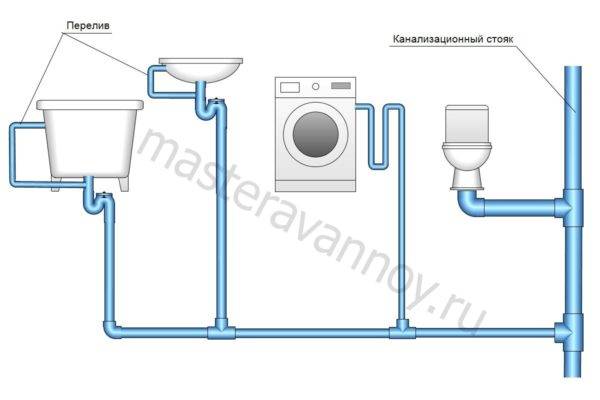 Typical sewerage scheme in an apartment.
Typical sewerage scheme in an apartment.
Blockages can form due to improper operation of any of the plumbing fixtures. There are several categories of causes of sewage blockages:
-
design - small diameter of pipes, slope angles of horizontal sections, incorrect mutual arrangement of plumbing fixtures;
-
technical - sagging pipes in horizontal sections, the use of metal pipes, burrs on the inside of the pipes, a rubber band / seal sticking out inside;
-
operational - the ingress of large fractions of dirt, food, household waste, hair. Most often, such blockages are formed in siphons, or where the sewage system has installation defects (for example, burrs).
Also, over time, the pipes are "overgrown" with deposits, especially cast iron. But this is happening rather slowly. The most likely place for the formation of deposits is in the horizontal sections of the pipes, where the water flows at a slower speed.
In the kitchen, food waste of small, large fractions inevitably gets into the drainage system through the sink. This point of water intake is usually the farthest from the sewer riser in the toilet. With small volumes of water and slope angles of horizontal sections of the internal sewage system, the liquid does not have time to carry this waste into the riser.

There is an accumulation of organic matter in the pipes, up to a blockage, which the user will have to clean with improvised means. In addition, organics begin to be processed by bacteria. Obstruction of pipes can occur anywhere between the riser and the connection point of the kitchen sink. As a result, the performance of any plumbing fixture in the kitchen, combined bathroom, bathroom or toilet may be disrupted if the kitchen sink is connected to the sewer before the bathroom.
Causes of occurrence
If not cleaned regularly, contamination in the sewer pipe can cause serious plumbing problems. When the drain is clogged, the water does not go well, it stands, and the dirt ends up in the bath. It becomes very unpleasant to take water procedures.
Among the most common causes of blockages, there are several.
Dead skin cells and hair adhere to the walls. If left untreated, dirt builds up over time and clogs the drain hole.

- The bath becomes dirty due to regular water procedures, frequent washings. Traces of soap remain on the walls, which accumulate over time, although the water itself ends up in the sewer.
- Prolonged lack of proper care can lead to the formation of limescale. You can ignore the appearance of such a blockage for a long time until the situation becomes too serious. Dirty pipes need to be cleaned monthly, otherwise they can become unusable over time.
- If the sewer is often clogged, it is possible that its installation was carried out incorrectly. Contamination can quickly accumulate if the slope is very low.

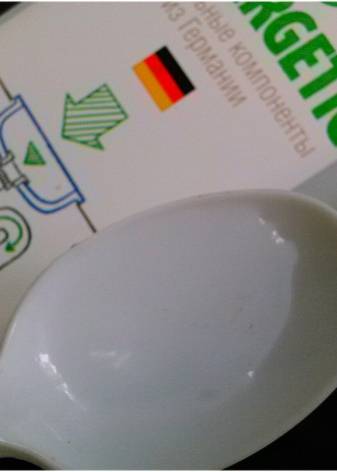
- When installing the pipeline, you need to ensure that there are not too many bends. They can collect sand, grease, hair and other contaminants.
- Avoid choosing a pipe that is too narrow. Dirt in such elements accumulates much faster.
Having understood what exactly caused the pollution, you can decide how best to eliminate it. If you think that you will not be able to deal with the problem on your own, you can seek help from a specialist. However, many people prefer to do their own cleaning, keeping their budget. There is nothing difficult in such work. You just need to understand some of the nuances in order to choose the best remedy.
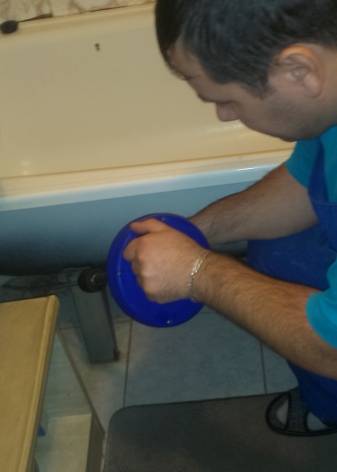
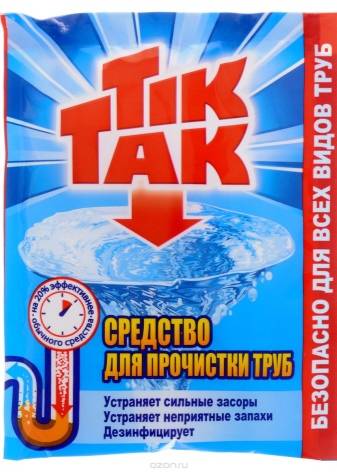
We eliminate the blockage with improvised means
Heat five liters of water to boiling water and pour into the drain hole. In the early stages of contamination, this method will help to quickly clean the pipe in the bathroom. If the water does not go into the pipe at all, then you should not use this technique. Plastic pipes should not be washed with boiling water. It is better if the water temperature is not higher than 90 degrees.
Ventuz
The most affordable device that can break through blockages in the bathroom and is available in every home is a plunger. Consider how to clear a blockage in a bathroom and get rid of a plug in a pipe with the correct use of a plunger. It is also useful to use the device for the prevention of blockages.
- Fill the tub with water so that the rubber nozzle of the plunger is covered with liquid.
- Install the plunger, blocking the drain hole, and slightly push the handle.
- Move the plunger handle up and down without lifting the rubber part of the device from the drain surface. After pumping the drain several times, it is better to slightly raise the device so that water gets into the pipe. If you need to check whether the blockages in the bathroom have been removed, turn on hot water and flush the drain. If the water is difficult to pass, it is better to try again.
Soda and vinegar
If the pipe is so clogged that water doesn't even seep into the drain hole, try removing the plug with baking soda and vinegar.
- Pour five tablespoons of baking soda into the drain, and pour half a glass of vinegar.
- Close the hole with a stopper and wait until the chemical reaction is over.
- Flush the pipe with a high pressure of hot water.
Cable
How to clear a blockage in the bathroom if the drain is clogged so that the above means do not help? Use a special cable. The device resembles a twisted wire coiled into a spiral with a handle at the end.
In the case when the pipes are plastic, cleaning with a cable must be carried out with special care. It is better to cover the floor near the bathtub so as not to get dirty while removing the device.
- Place the sharp tip of the fixture into the drain hole. Always keep the cable taut. Therefore, the work is best done together.
- To remove blockages in the bathroom, rotate the handle while advancing the cable through the pipe. If you feel that you have bumped into an obstacle, make a few movements with the rope back and forth, continuing to screw in the rod. The blockage will break or be pulled out with the cable.
- At the end of the procedure, flush the drain with a pressure of hot water.
When to call a plumber
You can deal with a blockage in the bathroom yourself, using household chemicals or folk methods. When working with concentrates, you need to take care of protective items - an apron, gloves, a mask, glasses.
If it is not possible to clean the pipes with the help of special tools, a plunger or a cable, they call a plumber to fix the problem.
In the absence of skills in working with devices that are designed to remove plugs formed in pipes, an unpleasant situation may occur. Under the influence of pressure, the siphon is knocked out, as a result, industrial water begins to flow. To avoid the consequences, it is recommended to call a specialist.
To unclog the sewers, craftsmen use hydrodynamic equipment - a compressor equipped with valves and hoses. The principle of operation of the device is based on a strong pressure of water, with which you can remove the blockage in the bathroom.
It is not recommended to leave hair in the drain hole of the plumbing after taking a bath. Collect them and throw them in the trash can to prevent blockages. You can purchase a metal or plastic mesh that fits into your kitchen sinks to keep food debris from entering the drain.
Using a plumbing cable
The cable is used if the drain is clogged far from the drain hole and does not pierce it with air pressure. Heavy fatty and soapy deposits sometimes completely seal the water hole.
The cables are produced in different lengths and modifications. These are flexible metal ropes 3-5 meters long and 4-10 millimeters in diameter. Pushing them into the sewer, the blockage is moved into the thick part of the main pipe or pulled out with a hook at the end.
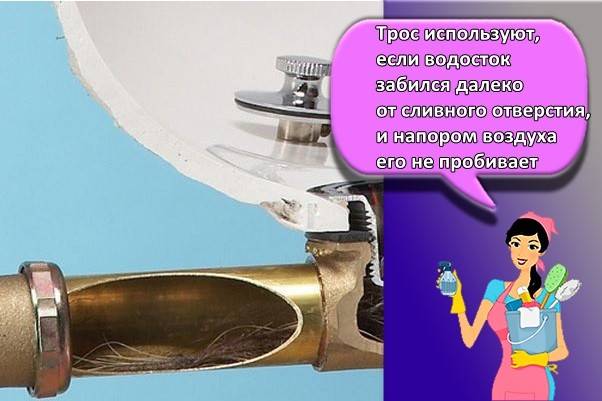
The technology is simple, but requires certain skills:
The end of the cable is inserted into the drain hole. Sometimes you have to disassemble the siphon or remove the flap from the fitting.
A basin for water is placed under the open edge of the pipe and a container is prepared for collecting garbage.
The cable leads to the side of the riser and rotates at the same time. When the cable rests against the blockage, it is pushed 2-3 times with careful movements
The free movement of the tool testifies to the breaking through of an obstacle.
Carefully remove the cable, with which a pile of debris often comes out.
A few important points to use this method:
- the cable poorly removes viscous deposits that have stuck up the pipe walls - it simply expands the space for the passage of water;
- the tool will easily damage plastic pipes and chrome-plated surfaces.
After the end of the work, the pipes are washed with very hot water to get rid of small debris.
The rope is a convenient and reliable means of removing foreign objects, hair, particles of fabric that often accumulate in the sewer systems of baths during washing and washing.
Special means
There is a huge choice of ready-made chemicals that can be used to get rid of the blockage, as well as the spread of prices. Before you clear the blockage in the pipe in the bathroom with one of them, you need to familiarize yourself with the recommendations for using such tools. If the blockage is running, then only chemical means cannot be dispensed with, you will have to use the mechanical ones presented above.
Chemicals are also one of the quickest ways to unclog pipes.
Household chemicals for removing blockages in pipes are best purchased in the form of a gel or powder.
Important Tips:
Powder and liquid products do not differ in effectiveness.
When buying, check with the seller if the product is suitable for the type of pipes that are available in your home.
Liquid products should be poured directly into the drain hole, after pouring powders, pour hot water (1 glass).
After the time specified in the instructions, spill the pipes with hot water in order to rinse the pipes well and remove debris.
When using these products, it is important not to use the bathroom for a while. It is optimal to do cleaning at night.
After the chemical agent has been poured into the drain, it is necessary to turn on hot water to flush the pipes
Be sure to take precautions when working with chemicals
Specific means
In the store in the thematic section, you can get confused, but there are a number of tools that are especially popular with consumers. Among them:
"Mole" is a well-known remedy used by our mothers and grandmothers for a long time. But it cannot be used for plastic pipes;
Pipe cleaner in different types
Mister Muscle is suitable for all pipes. The active substance penetrates into all the nooks and crannies of the sewer system. In addition to eliminating various types of blockages, it removes bacteria, thereby eliminating unpleasant odors;
A powerful chemical for home use
Tiret removes blockages quickly. Has no ammonia odor;
A practical, strong, odorless chemical
"Potkhan" - dissolves all types of blockages, and quickly.
Unique chemical agent, suitable for all types of blockages
When working with any chemicals, rubber gloves, an oilcloth apron and safety goggles should be used.
After using the product, if there is a siphon in the bathroom and kitchen, it must be thoroughly cleaned.

